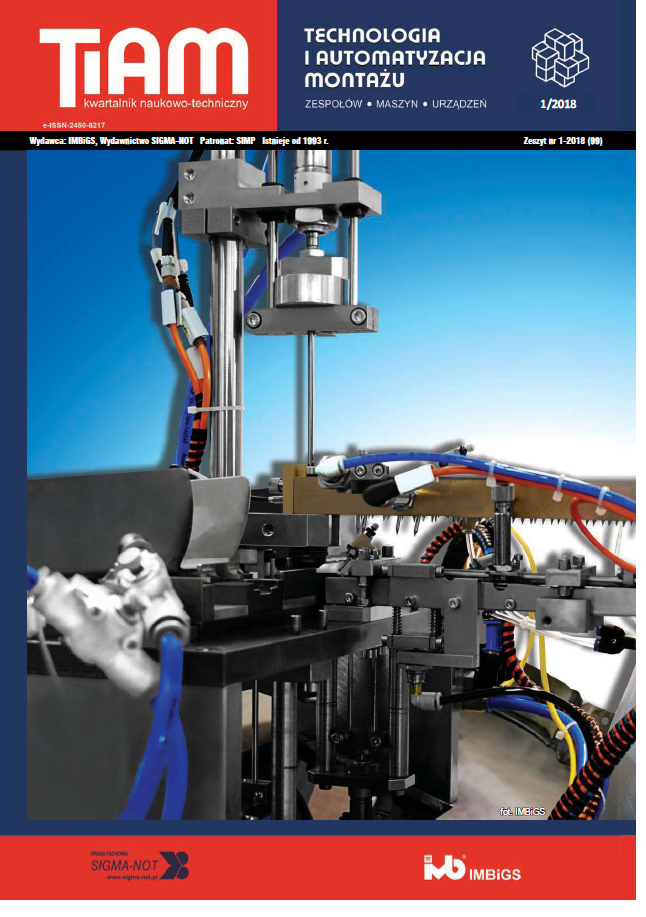Abstract
Innovative composites technologies enable increasingly wider scope of applications of those materials. The utilisation of composites becomes more and more cost effective. Two aspects determine such situation. Firstly composites have a large number of advantages in comparison with metal elements. Secondly the economic account turns out better and better due to technologies development and growth of composites market, especially material suppliers. Manufacturing of industrial assembling equipment usually takes place in single piece or very small quantities. In such situation utilization of composite materials is especially justified, because they give wide possibilities of shaping construction elements geometry. The choice of appropriate technology seems to be essential and it is supported by the possibilities of innovative process materials. The substitution of metal elements with composite ones could benefit with: single process manufacturing of complex shapes or avoidance of expensive machining of large elements. The advantages of composite technologies make them worth attention during design process of industrial assembling equipment. In the article a short characteristic of design and construction problems in assembling equipment has been performed. It has been focused on technological aspects. A short review of composites technologies and materials adequate for assembling equipment has been made. Few elements from existing machines which potentially can be made of composites have been selected. A comparison of metal and composite technology for a single element has been performed.
This is an Open Access article distributed under the terms of the Creative Commons Attribution License CC BY 4.0 (https://creativecommons.org/licenses/by/4.0/)
References
Boczkowska A. i in. 2003. „Kompozyty” .Oficyna wydawnicza Politechniki Warszawskiej.
Łunarski J. 2012. „Projektowanie procesów technicznych, produkcyjnych i gospodarczych”. Oficyna Wydawnicza Politechniki Rzeszowskiej.
Łunarski J., W. Szabajkowicz. 1993. „Automatyzacja procesów technologicznych montażu maszyn”, Wydawnictwo Naukowo-Techniczne.
Kobiałka J., G. Oroń, Z. Urbaś. 2014. „Jakościowe i wydajnościowe doskonalenie zautomatyzowanego procesu montażu aplikatorów”. Technologia i Automatyzacja Montażu (2): 32–36.
Pergałowski S., J. Kobiałka, J. Łunarski. 2009. „Automatyczne urządzenie do wydajnego zamykania wkładów zniczy nagrobkowych”. Technologia i Automatyzacja Montażu (2): 24–27.
Rychlik K., M. Jastrzębski. 2012. „Jednowrzecionowa obrabiarka zadaniowa do głębokiego wiercenia otworów wiertłami lufowymi”. Technologia i Automatyzacja Montażu (3): 24–27.

